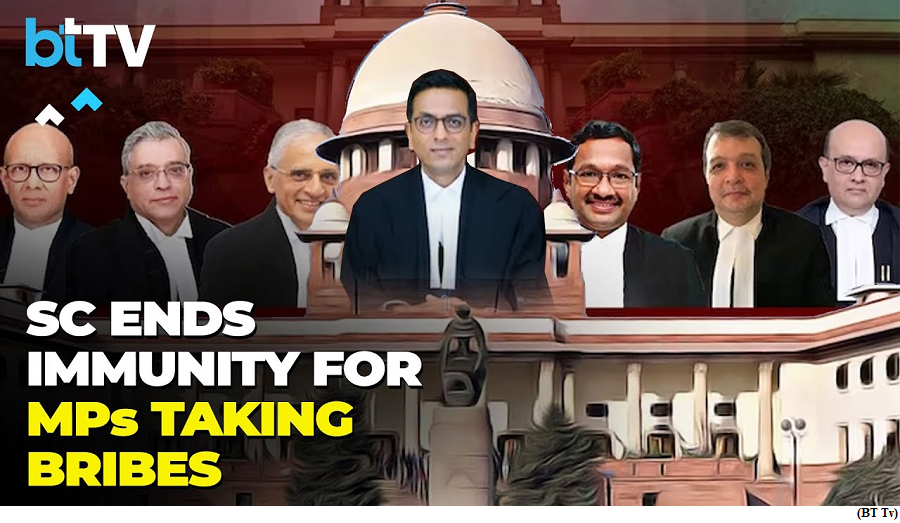ISRO Ocean Colour Monitor reveals impact of pollution over Delhi after Diwali (GS Paper 3, Environment)

Why in news?
- The Ocean Colour Monitor (OCM-3) Aerosol Optical Depth (AOD), developed using the SAC AErosol Retrieval (SAER) algorithm and leveraging data from the EOS-6 satellite, highlighted a notable increase in AOD values post-October 13, 2023, especially over the Indo-Gangetic Plain, with Delhi exhibiting consistently high AOD values.
- The tool offers a detailed analysis of aerosol concentrations across India.
- This advancement is particularly significant given the launch of EOS-6 in November 2022, which was equipped with the cutting-edge OCM sensor, enhancing our capabilities to monitor atmospheric aerosols like never before.
OCM-3 AOD product:
- The OCM-3 AOD product is accessible to researchers and students through the Meteorological and Oceanographic Satellite Data Archival Centre (MOSDAC) following formal registration.
- This opens up new avenues for exploring air quality dynamics, providing a robust benchmark for air quality simulation models. Such insights are invaluable for scholars and policymakers alike, paving the way towards a cleaner and healthier environment.
- Featuring an impressive 1 km spatial resolution, the OCM-3 onboard EOS-6 marks a significant leap in monitoring capabilities. It delves into the particulate matter suspended in the atmosphere, offering a precise understanding of air quality dynamics.
- This high-resolution data sheds light on the distribution and transport of particulate matter (PM2.5/PM10) over metropolitan areas, not just within India but also globally. It provides a comprehensive view of aerosol blankets originating from various sources, including South Asian fires and Canadian wildfires.
Key Observations:
- The reliability of the OCM-3 AOD product has been rigorously validated against ground measurements.
- A comprehensive four-month validation process, spanning from January to April 2023, compared aerosol measurements with ground truth from AERONET stations across India, demonstrating excellent performance with correlations as high as 0.8.
- Recent case studies have highlighted a notable increase in AOD values after Diwali in 2023 revealing the significant impact of pollution during and after the festival.
- Although there was some improvement in air quality by mid-December, another spike in AOD levels was observed by mid-January 2024.
Way Forward:
- These findings, supported by AOD and fire products along with trajectory modelling, emphasise the contribution of agricultural residue burning to severe air pollution.
SC ends immunity for legislators taking bribes
(GS Paper 2, Judiciary)
Why in news?
- A seven-judge Bench of the Supreme Court has declared that parliamentary privilege or immunity will not protect legislators who take bribes to vote or speak in Parliament or State Legislative Assemblies from criminal prosecution.
- The unanimous verdict authored by Chief Justice of India D.Y. Chandrachud overruled a 25-year-old majority view of the Supreme Court, laid down in the JMM bribery case judgment of 1998, that lawmakers who took bribes were immune from prosecution for corruption if they go ahead and vote or speak in the House as agreed.

Highlights of the judgement:
- The seven-judge Bench said the majority on the five-judge Bench in the JMM bribery case had erred. The court did not want to perpetuate the grave error. Representative democracy was at stake.
- Chief Justice Chandrachud clarified that the offence of bribery was complete the moment the corruption money was accepted.
- The Constitution Bench dismissed notions that whittling down parliamentary immunity would expose a vote or a speech made by Opposition lawmakers in the House to criminal investigation and thus enhance the possibility of abuse of the law by political parties in power.
- Bribed lawmakers, were destructive to the “aspirational and deliberative ideals of the Constitution and create a polity which deprives citizens of a responsible, responsive and representative democracy”.
- Chief Justice Chandrachud reasoned that the freedom of speech and expression, which include voting in the House, and attendant immunities granted to legislators under Articles 105 and 194 did not extend to giving or taking bribes.
- The judgment said parliamentary immunity would kick in only if a legislator acts in furtherance of “fertilising a deliberate, critical and responsive democracy”.
Parliamentary privilege:
- The shield of immunity or parliamentary privilege could be claimed in two circumstances:
- If the actions of a legislator were meant to enhance the dignity and authority of the House and its members as a collective body.
- If they were in the exercise of his rights to free speech, protest and freedom from arrest, among others. A claim for immunity would not survive if it failed this two-fold test.
- Criminal courts and Houses of the legislature have parallel jurisdiction over allegations of bribery. One cannot negate the jurisdiction of the other.
- The jurisdiction exercised by a competent court to prosecute a criminal offence and the authority of the House to take action for a breach of discipline in relation to the acceptance of a bribe by a member of the legislature exist in distinct spheres down.
Appeal before the SC:
- The reference came in an appeal filed by JMM leader Sita Soren, who was accused of taking a bribe to vote for a particular candidate in the Rajya Sabha elections of 2012.
- Though she later denied culpability on the ground that she voted for the official nominee of her own party, the CBI had filed a chargesheet in the case. The Jharkhand High Court had refused to quash the chargesheet, following which she had moved the apex court.
A case to reform bail law and guidelines, but make the right diagnosis first
(GS Paper 2, Judiciary)
Context:
- Recently, the Chief Justice of India said that there is a growing reluctance on the part of trial judges to grant bail and that jail, and not bail, was becoming the rule.

Details:
- Over 75% of India’s prison population are undertrials while overcrowding in Indian prisons stands at 118%. These stark realities are often cited to represent the scale of the crisis in India’s criminal justice system.
- The Supreme Court of India recently acknowledged, in Satender Kumar Antil vs CBI, the ineffectiveness of India’s bail system and its contribution to this crisis. The Court noted that despite repeated guidelines on bail law, things have not changed much on the ground.
- The Court provided comprehensive guidelines on laws related to bail, such as mandating timelines for the disposal of bail applications and laying emphasis on the need to enact a separate legislation.
- The judgment noted that crowding jails with undertrial prisoners ignored the principle of ‘presumption of innocence’ and that ‘bail not jail’ should be the norm. However, there is still a need to reflect on why these established principles are honoured more in their breach than observance.
Lack of safeguards:
- The Court averred that effective enforcement of safeguards against arbitrary arrest would eliminate the need to seek bail from courts.
- However, these safeguards exclude a significant proportion of arrested persons, especially those from disadvantaged sections of society, who form the large majority of undertrial prisoners.
- For example, the arrest of a person is justified as ‘necessary’ if the police have ‘reasons to believe’ that it is required to ensure their presence in court. Such vague justifications put migrants, persons without assets or those with no contact with family at higher risk of arrest because of their socio-economic conditions.
- Data from the Fair Trial Programme (FTP) in Yerwada and Nagpur central prisons can be instructive here. Of the undertrials (2,313) represented by the FTP , 18.50% were migrants, 93.48% did not own any assets, 62.22% did not have any contact with family, and 10% had a history of previous incarceration.
- Evidently, a significant proportion from the sample would be unjustifiably excluded from protections against arrest and contribute to the large proportion of undertrials in our prisons.
Approach to bail adjudication:
- The power to grant bail is largely based on the court’s discretion and depends on the facts of each case. The Supreme Court has time and again laid down principles for guiding the exercise of such discretion by courts in deciding bail applications.
- While these guidelines lay stress upon the need to release applicants on bail, they also validate the denial of bail or imposition of onerous bail conditions based on the gravity of the offence, character of the accused and likelihood of the accused absconding or tampering with evidence.
- In all such cases, courts rarely exercise their discretion for granting bail and are likely to take a more stringent approach against release on bail.
- Despite existing guidelines, courts do not usually record reasons for rejecting bail; the rationale behind how courts factor in offence-based and person-based considerations in deciding bail applications remains unclear.
- This is important because marginalised persons bear the brunt of these broad exceptions. They are either denied bail or granted bail with onerous conditions, in absolute disregard of their realities.
- Bail conditions in the nature of cash bonds, surety bond, proof of property ownership and solvency, as is commonplace, are at odds with the reality of undertrial prisoners languishing in jails.
Challenges in bail compliance:
- Lack of means to arrange for money/property and local sureties are the most significant reasons accounting for an undertrial’s inability to comply with bail conditions, realities borne out by our experience in the FTP.
- However, factors such as lack of residence and identity proof, abandonment by family and limitations in navigating the court system also undermine an undertrial’s ability to comply with bail conditions.
- Compliance with bail conditions and ensuring presence in courts for the overwhelmingly structurally disadvantaged undertrials requires constant handholding, as is evident by the FTP’s interventions in the past three years. This is a crucial aspect of ensuring last mile delivery of justice that the extant bail law does not consider.
- Our experience shows that in 14% of cases, undertrials were unable to comply with bail conditions and remained in prison despite being granted bail. In almost 35% of these cases, it took over a month after obtaining the bail for undertrials to comply with bail conditions and secure their release.
Flawed assumptions:
- The bail system, as it currently operates, has flawed assumptions that every arrested person will be propertied or have access to propertied social connections.
- It presumes that the risk of financial loss is necessary to ensure the presence of the accused in court. Such assumptions have the effect of rendering the rule of ‘bail not jail’ meaningless for a significant proportion of undertrial persons.
- For any bail law to effectively provide relief, a careful re-evaluation of the said presumptions is imperative. There is an urgent need for bail reform but it would be counterproductive to undertake a reform exercise without first developing the basis to understand and diagnose the problem at hand.




